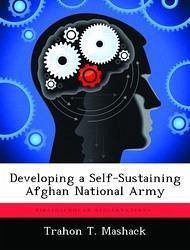
Contrasts Between American and Afghan Warriors, a Comparison Between Two Martial Cultures
Versandkostenfrei!
Versandfertig in über 4 Wochen
53,99 €
inkl. MwSt.

PAYBACK Punkte
27 °P sammeln!
The United States has committed to training and equipping the Afghan National Army. This mission is executed primarily by conventional American soldiers, who naturally transfer much of their martial culture to their Afghan partners. This study proposes to identify expected problem areas where Afghan and American martial cultures conflict. This study identified four areas where Afghan and American martial cultures contrast through an intense survey of Afghan military history and current research. The most important contrast is that the Afghans fighting groups are loyal to a local community or g...
The United States has committed to training and equipping the Afghan National Army. This mission is executed primarily by conventional American soldiers, who naturally transfer much of their martial culture to their Afghan partners. This study proposes to identify expected problem areas where Afghan and American martial cultures conflict. This study identified four areas where Afghan and American martial cultures contrast through an intense survey of Afghan military history and current research. The most important contrast is that the Afghans fighting groups are loyal to a local community or group, rather than the idea of an Afghan nation state. Afghans value military skills but may tend to withhold techniques and knowledge in order to preserve personal power. Afghans either view discipline as very flexible or very rigid, depending on their personal background with the mujahidin or DRA Army. Afghans are motivated to fight by personal reasons, which make religion, profit, or revenge much more attractive causes than the stability of the Kabul government to most Afghans. American trainers can help bridge the gap between these martial cultures by demonstrating courage, self sacrifice, and technical skills, valued by both cultures, to build rapport and mutual respect.














